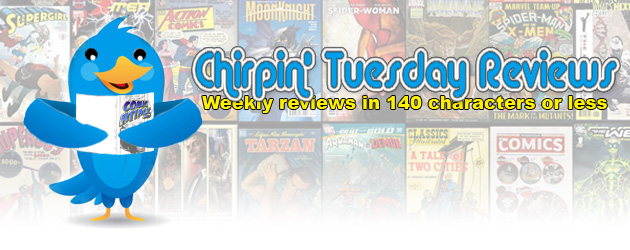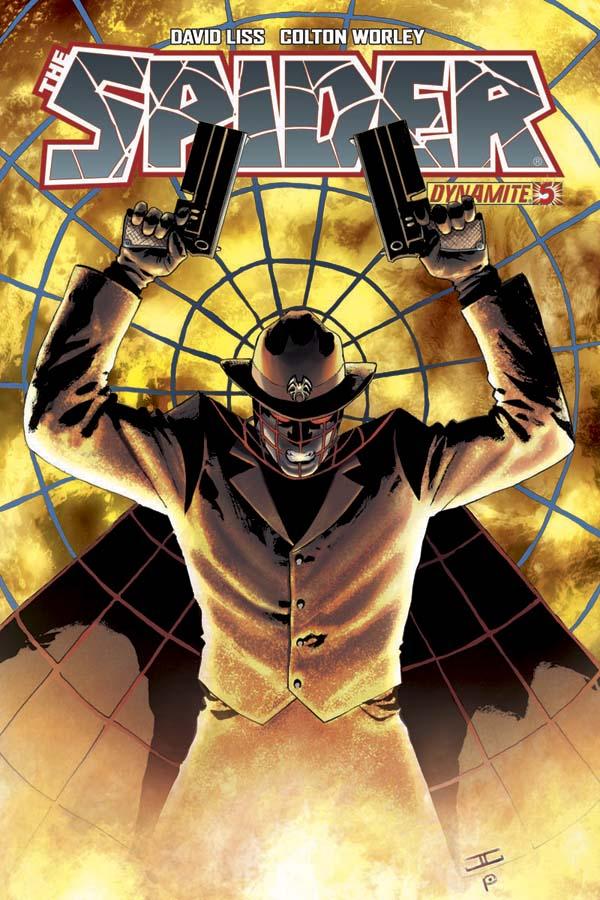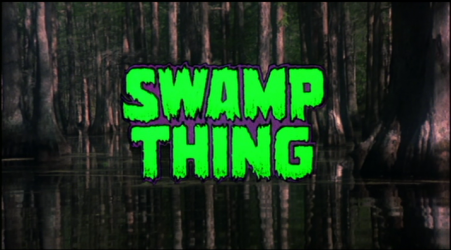Ward Batty published and worked on a variety of fanzines,
but this might be his most unusual entry…a Fandom Calendar!
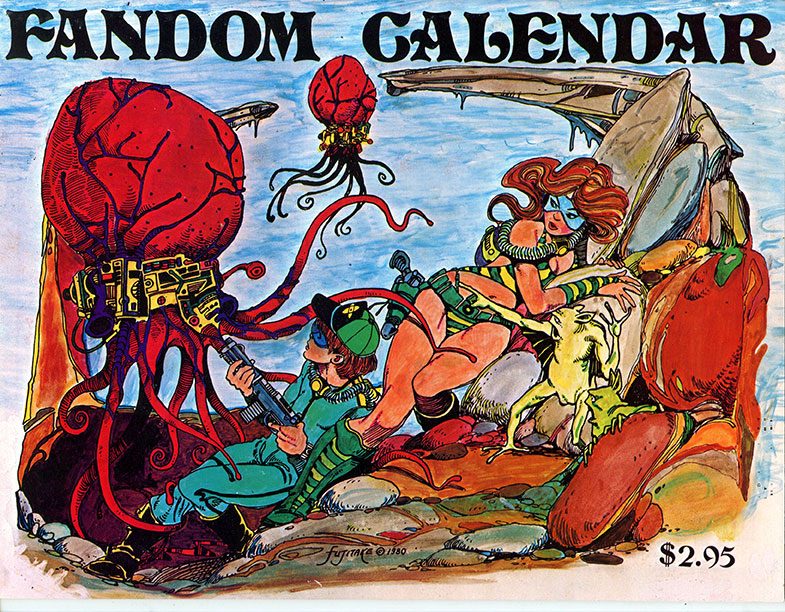
Fandom Calendar (2): 1981
Editor/publisher: Ward Batty
Ward Batty is a name I remembered immediately….but I could not remember from what! Well, thanks to Mr. Batty himself, I can now rectify that situation! I gleaned some great info from Ward though email, which you will see throughout this column. Strangely enough, Ward got into fandom almost identically the way I did, through his school (when he was in the 5th grade). Although, instead of a librarian, Ward was lucky enough to have a cool principal who was into pulps and subscribed to TBG. It was at this point Ward discovered apas (amateur press associations) and joined one of the biggest, CAPA-alpha (the first apa, started by Jerry Bails, which you can read about here.)
Ward went on to tell me about his beginnings in fandom below…note the info about the cover of the calendar seen above.
Fandom Digest, Fandom Advertiser Digest (one issue of each) were all I had published prior to doing the Fandom Calendar. I co-published the Fandom Calendar with Jay Zilber in 1979 and did the second one myself in 1980. It must have been my idea and Jay had the connections to established fan artists. The first year had Wendi Pini, Fred Hembeck, Dave Sim among others I can’t currently remember and don’t have a copy handy right now. The best thing about a calendar is it is really just a 24-page magazine (plus cover and center spread in this case, so 28-32 pages) that sells for two to three times what someone would pay for a magazine that size. My biggest regret is that because I knew so little about printing I thought I was sending a guide to do process color on the cover and they reproduced it, so my poor coloring really marred a beautiful Dennis Fujitake piece. I did find a great printer, however, you can see my literal fingerprint in the colors on the cover!
In addition to the art we tried to include as many industry birthdays and historical dates as possible. This was a rarity back then which much of that information had to be researched, usually through first or second-hand sources.
After the calendars I don’t think I published anything outside of apas and fanzines until Trufan Adventure Theatre #1 and 2 (in 1985, collecting my strip with Charlie Williams from CBG) and then Boffo Laffs 1-5. #1 was the first comic book with a hologram on the cover. After that came Comic Shop News.
I also was curious when Ward started reading comics, to which he replied…
…third or for grade. I forget how exactly, but I was pretty into them by middle school. I worked for Cantrell’s Book Store in Decatur, GA the summer between middle and high school. They didn’t sell new comics but had a large back stock collection. I remember being tasked to open boxes in the back room of things they ordered but never opened. This was 1976 or so and one box was about 50 copies of Silver Surfer #1s and that was an exciting find. They were open in the early 1960s so they had been dealing in comics since the mid 60s at least.
After fandom, Ward started producing what would become a real fixture in the comic world, namely, Comic Shop News. Of that, Ward told me that “We published CSN for six months before we could take a paycheck; so many weeklies had been started after CBG was such a success that we had to publish 30 issues or so before we sold any advertising. Once Carol Kalish from Marvel started taking ads, other publishers followed and the paper became profitable. We’ve been doing CSN weekly since 1987. I’m working on #1708 this week.”
Wikipedia says
In 1982, Biggers and Batty became co-owners of a Marietta, Georgia, comic shop, Dr. No’s, for which Biggers began writing a newsletter, The Doctor Knows. Realizing there was a market for an upbeat, product-focused store newsletter, they started Comic Shop News. At the time, DC, Marvel and other publishers were selling their own newsletters in bundles to comic shops. Using that distribution technique, CSN is sold in bundles to comic shops who distribute free to customers as a sales tool and to reward weekly visits.
CSN grew to become the largest-circulation weekly in the comic book industry, and still continues as a weekly publication with over 1,400 issues published to date and over 130 million copies sold. CSN is available in over 400 comic shops worldwide, but mostly in North America. CSN was originally four black-and-white pages but expanded to eight pages and full color.
Cliff Biggers also did a fair amount in fandom. You can read about it on his blog here. Wikipedia mentions that…
Biggers’ first professional writing was done for Jim Steranko’s Mediascene magazine in 1972; he worked intermittently for Steranko for two years. At the same time, he and his wife Susan H. Biggers co-edited and published the science fiction review magazine Future Retrospective. He and Susan Biggers received the 1977 Rebel Award for outstanding Southern science fiction fan achievement for their work with Future Retrospective.
Biggers was a founding member of the Atlanta Science Fiction Club (ASFiC) in 1977. He wrote and edited Atarantes, the ASFiC publication, until 1982, when he cut back his involvement in Atlanta science fiction.
In 1982, Biggers became a co-owner of a comic shop, Dr. No’s, for which he began writing a newsletter, The Doctor Knows. That newsletter grew into Comic Shop News, a publication he co-launched with Ward Batty in the spring of 1987. CSN grew to become the largest-circulation weekly in the comic book industry, and still continues as a weekly publication. Biggers also wrote dozens of articles for Krause Publications’ Comics Buyer’s Guide in the 1980s and 1990s, and acted as their primary price guide adviser for many of those years. Biggers also created and wrote the comic book After Apocalypse, which featured the first published artwork of Mark Bagley (who would later go on to illustrate The Amazing Spider-Man and Ultimate Spider-Man) and Dave Johnson.
In the 1990s, he co-wrote Earth Boys with Brett Brooks; the series was illustrated by co-creator Dave Johnson. The recurring comic book story was featured in several issues of Dark Horse Comics’ Dark Horse Presents. He and Brett Brooks also co-wrote the final three issues of I-Bots, the Tekno Comics series based on a concept by Isaac Asimov. In those issues, they introduced the Corp-Bots, a group of characters who were scheduled to appear in their own adventures until Tekno abruptly ceased publishing.
One of the kings of the letter columns back then, Brian Earl Brown also has a pdf full of fanzine information that you can see here…I mean, it is huge! This is a link to the 17th “issue,” so that means there is a lot more out there…this one even has a Rick McCollum cover!
OK, on to the calendar! This is actually the second “issue,” if you will. This, the 1981 installment, starts off with the gorgeous Dennis Fujitake cover, seen above. There are several other mainstays of comic fandom included here, including Alan Hanley, Earl Geier, Mitch O’Connell, Willie Blyberg, Rich Bruning, Richard Howell, and more. Below you can see a selection from the calendar.
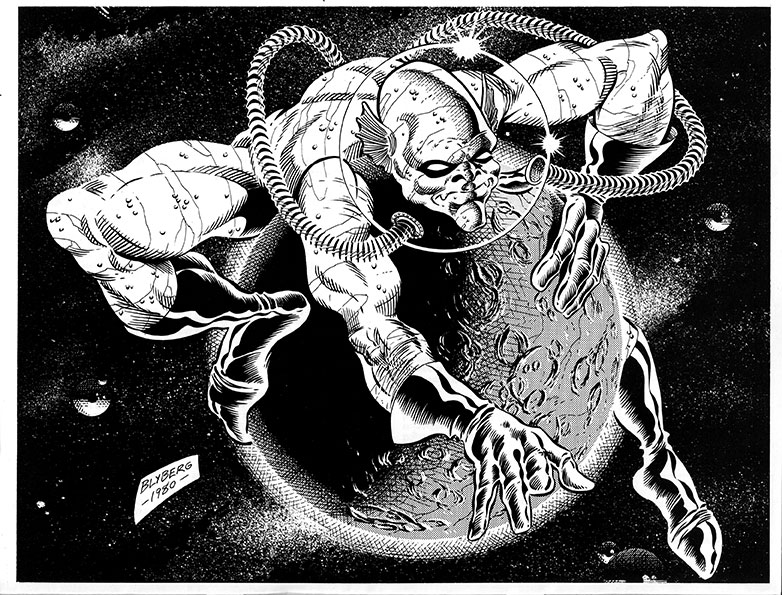
Willie Blyberg created one of the better fanzines, Wowiekazowie. You can see a few installments of Ink Stains covering that zine.
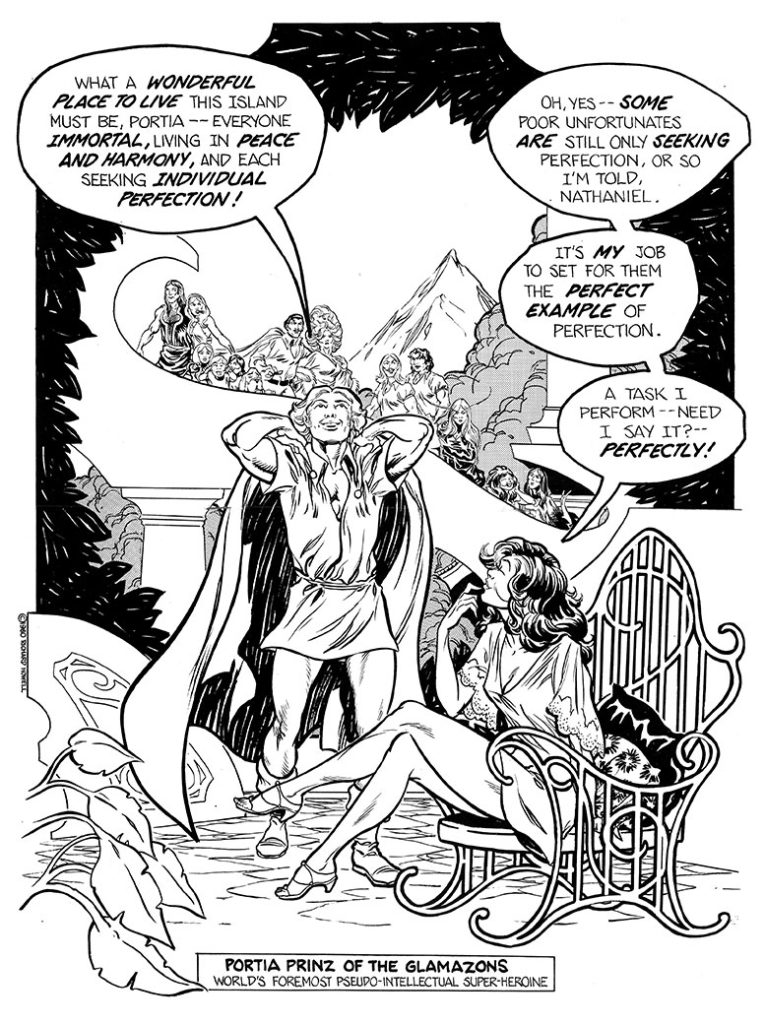
Richard Howell has a rich history as well. From Wikipedia again…
Richard Howell entered the comics industry in 1977 with his self-published series Portia Prinz of the Glamazons. He and his partner Carol Kalish co-edited the New Media/Irjax line of magazines. Howell replaced Peter B. Gillis as editorial director of New Media/Irjax in June 1981. Howell began working for Marvel Comics in 1981 and DC Comics in 1983. Writer Tony Isabella and Howell produced The Shadow War of Hawkman limited series in 1985 and an ongoing Hawkman series the following year. Howell and writer Steve Englehart crafted a twelve-issue The Vision and the Scarlet Witch limited series in 1985-1986 wherein the Scarlet Witch became pregnant. With co-editor Jesse Reyes, he relaunched the Vampirella character at Harris Comics and co-founded Claypool Comics with Ed Via in 1993. Howell served as editor of Claypool’s line throughout its existence. Claypool announced in July 2006 that the print end of its published line would cease, as Diamond Comic Distributors, the industry’s major distribution arm, would no longer carry it. Deadbeats continues as a webcomic at the Claypool Comics website.
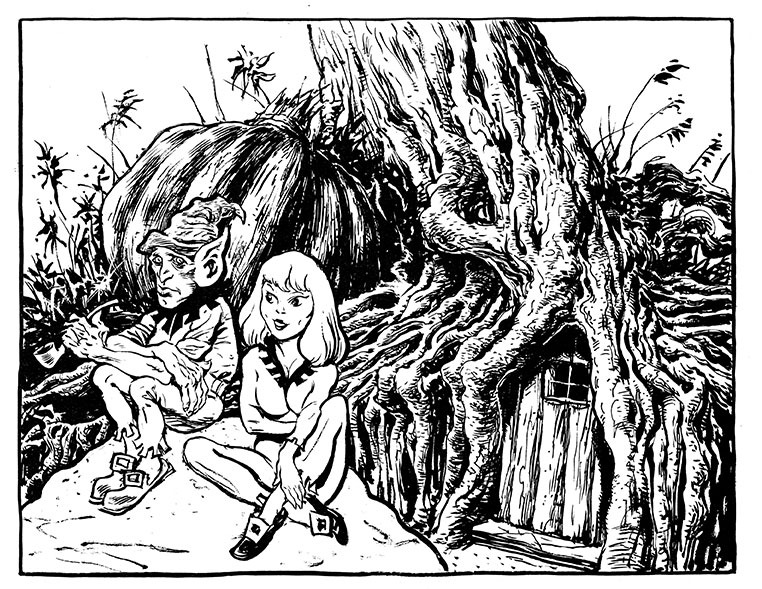
Bret Blevins has been an established professional for many years now. In fact, the year of the publication of this calendar he began his professional career working for most of the major publishers, as his site states here.
Many of us that were involved in fandom maintained relationships from long ago, sometimes growing into professional ties. Ward says that
Since I made my hobby my job I never really left fandom. Events like Comicon International are a great way to see old friends and acquaintances as some of those friendships go back 40 years, to when I was 18.
I never made it in but owe a lot to very generous folks from the UFO (United Fanzine Organization). Their apa was all about fanzine publishing, editing, doing interviews, decent layout, etc. I applied and was rejected but unlike others who then left I just hung around and picked up a lot of knowledge from folks who were generous to share it.

Alan Hanley is well loved by anyone who knew fanzines from the past and appears in many installments of this column.

Mitch O’Connell is another fan artist who has had a flourishing career in comics and most recently, pop art. He is active on Facebook and an all around goofy genius! I remember well many of his exciting TBG covers, for one.
I wondered if there were any interesting stories Ward remembered from those times gone by, and he share this quote below.
The booming 90s were a fun time. I remember being at a trade show and a publisher would see me and invite me to dinner with whatever group they were taking out because I was press and so they could then write off the dinner as an expense. I’d get credit for a dozen freelancers getting a free dinner but the publisher was paying the check. The trade shows were in Las Vegas and that is a fun place to be with folks when your industry is making a lot of money.
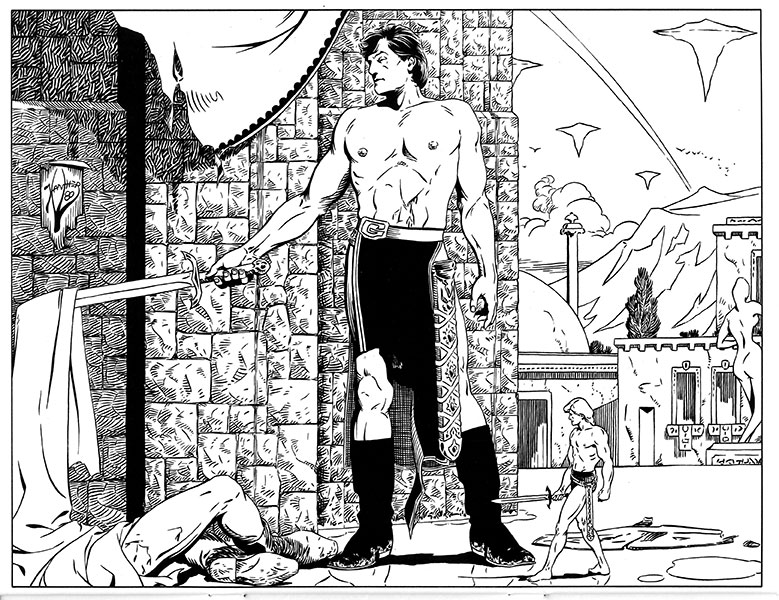
Christopher Hanther went by just his last name as the creator of Tandra. I remember the clean and professional work from long ago. The Lamiek.net site describes him with…
Christopher Lindbergh Hanther, Jr. grew up in rural Memphis and displayed an early talent in drawing. He moved with his family to Knoxville, Tennessee, but his heart always remained with the farmland and open space. Chris Hanther studied advertising art, after which he served in the air force for a short while. Back in civilian life, he moved to New York and started working for comics publisher Marvel. In 1971, Hanther returned to the country and started developing an epic adventure story, Tandra, which he self-published in the series Critter, first released in 1973. Critter provided him with a platform to distribute his comics, especially Tandra. Over the years, Tandra appeared semi-regularly and acquired a small band of devoted fans. In 1995, Hanther had the opportunity to create a website for his comic, and he turned Tandra into a CD-Rom which was released in 2002.
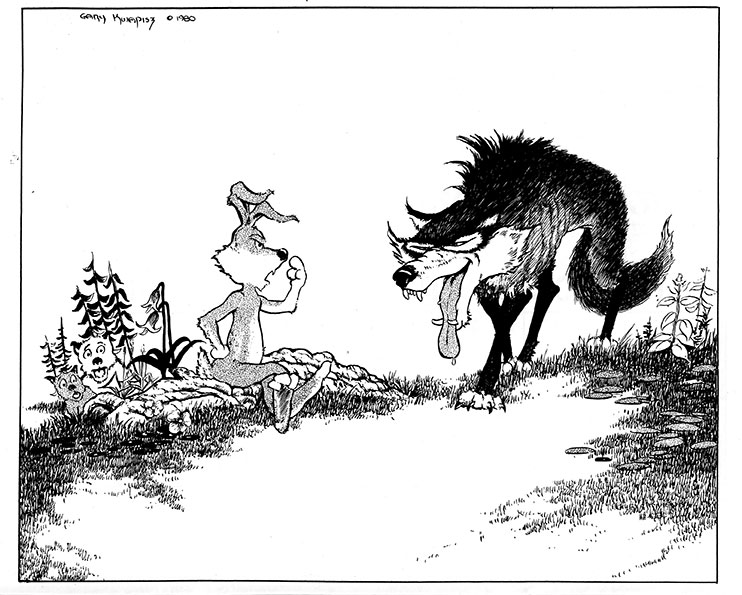
Gary has become an incredible artist, producing work in many genres, check out his site here.
There are many other artists whose work you can see when you download the pdf from my site. In addition to a short bio on each of the artists, the date pages themselves are stuffed with comic, fandom, and general entertainment dates, as well as scattered graphics from people like Robert Crumb, David Heath Jr, several underground comix artists, and more. Ward really put in some time producing this gem!
One last quote from Ward that seems fitting to end with below.
I wish I could find it but Jay Zilber wrote the best tagline for the first Fandom Calendar. The deal was that only the artists who had not yet worked for a major publisher would be eligible for inclusion in the calendar and he wrote “Maybe if they knew what we were planning, they’d have waited longer to turn pro.”
Tune in again next month when you will be able to read and see bits from one of this new batch of fanzines I purchased from the awesome Bud Plant. Could be FVP, Destiny, Forgotten Fantasies, Fem Fantastique or the Comic Crusader Storybook…I take requests!
Ken Meyer Jr
kenmeyerjr@yahoo.com

